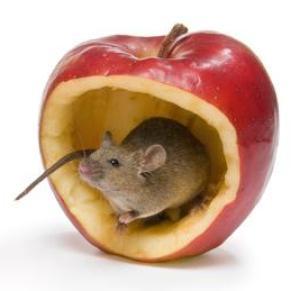摘要:为预防肌肉萎缩,研究员发现一种天然物质,这一成分从苹果皮中提炼而出,在肌肉养生方面有独特的功效,以及相关的药效也具有很好的前景。相关研究发表在Cell Metabolism杂志上。
苹果皮里面的乌索酸可以控制胆固醇以及血液中的血糖,这就意味着每天一个苹果就可以达到全面的健康。
研究人员克里斯多夫·亚当斯说,“乌索酸是一种有趣的天然化合物。当人们食用苹果皮的时候它作为日常饮食的一部分营养就被吸收了。这才是真正的‘每天一个苹果医生远离你’。”
在亚当斯博士发现苹果皮的重要性之后,一位美国专家研究了这些苹果皮中所含的激素对身体的影响,致力于的研究出一种药物,可以防止肌肉的萎缩,让一些上了年纪的人可以保持身体的强壮,减少他们骨折的风险。
这位专家认为,“随着年龄的增长,肌肉萎缩变成一种常见的疾病。”
在这种情况下生病很难痊愈,并且住院的时间会延长,人们只能推迟出院回家的时间。这让人很难理解,但也没有确实的药物去治疗这种现象。
为了解决这一情况,亚当斯博士研究了当肌肉开始萎缩时遗传基因发生的变化。他研究了果皮中的1300种化学物质,并在其中发现了乌索酸。
然后研究人员把这一物质按比例添加进了实验鼠的日常饮食,开始了一个健康测试。这些老鼠的肌肉开始增长,并且抓地力也更强。
还不止这些好处。这些食用了乌索酸的老鼠胆固醇降低了,并且那些之前因为肥胖导致血糖增高堵塞动脉的情况也有了很大的改善,有一部分已经瘦了很多。
可见乌索酸提高了增强胰岛素和胰岛素样生长因子,这2种刚好是肌肉增长的关键要素。乌索酸尤其集中在苹果皮上面,但同时研究人员也在蔓越橘、梅子、牛至和百里香中发现了这一成分。
亚当斯博士说,“当我们吃了母亲让吃的那些营养均衡的食物后就能获得其中的营养。当然那些吃垃圾食品的就不能得到了。”
他补充道,“研究苹果皮的目的在于人们是否能摄取那些用于实验的成分,同时计算出人们需要吃多少苹果才能帮助保持锻炼肌肉,同时减少腰围。”
在他的报告中,亚当斯认为,“鉴于当前治疗肌肉萎缩方法的稀缺,我们推测,乌索酸可作为一个有用的方式来治疗随着年龄增长带来的肌肉萎缩。”“肥胖和糖尿病同时也在研究范围内。”
至少最近有一些其他的研究认为每天一个苹果的确可以远离医生。——至少果蝇是这样的。在摄取了10%的苹果提取物后,随着年龄的增长,果蝇的行走,攀爬和移动却变得更加容易。
研究人员调查了那些有规律的吃苹果的女性,于其他人相比患心脏病已经中风的可能性减少了20%。

小鼠的苹果实验
生物探索推荐英文全文:
In search of a way to prevent the muscle wasting that comes with illness and aging, researchers have landed a natural compound that might just do the trick. The findings reported in the June issue of Cell Metabolism, a Cell Press publication, identify a component of apple peels as a promising new drug candidate for the widespread and debilitating condition that affects nearly everyone at one time or another.
"Muscle wasting is a frequent companion of illness and aging," said Christopher Adams of The University of Iowa, Iowa City. "It prolongs hospitalization, delays recoveries and in some cases prevents people from going back home. It isn't well understood and there is no medicine for it."
Motivated by the desire to change that, Adams' team first looked at what happens to gene activity in muscles under conditions that promote weakening. Those studies turned up 63 genes that change in response to fasting in both people and mice and another 29 that shift their expression in the muscles of both people who are fasting and those with spinal cord injury. Comparison of those gene expression signatures to the signatures of cells treated with more than 1300 bioactive small molecules led them to ursolic acid as a compound with effects that might counteract those of atrophy.
"Ursolic acid is an interesting natural compound," Adams said. "It's part of a normal diet as a component of apple peels. They always say that an apple a day keeps the doctor away…"
The researchers next gave ursolic acid to fasted mice. Those experiments showed that ursolic acid could protect against muscle weakening as predicted. When ursolic acid was added to the food of normal mice for a period of weeks, their muscles grew. Those effects were traced back to enhanced insulin signaling in muscle and to corrections in the gene signatures linked to atrophy.
Animals given ursolic acid also became leaner and had lower blood levels of glucose, cholesterol and triglycerides. The findings therefore suggest that ursolic acid may be responsible for some of the overall benefits of healthy eating.
"We know if you eat a balanced diet like mom told us to eat you get this material," Adams said. "People who eat junk food don't get this."
It is not yet clear whether the findings in mice will translate to human patients, Adams says, but his goal now is to "figure out if this can help people." If so, they don't yet know whether ursolic acid at levels that might be consumed as part of a normal diet might or might not be enough.







